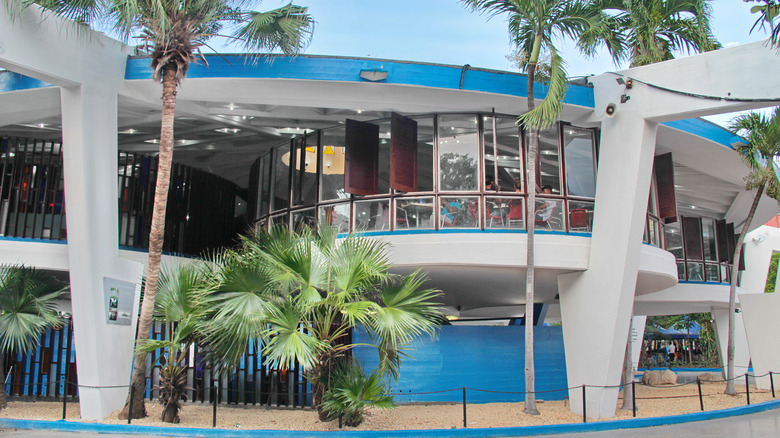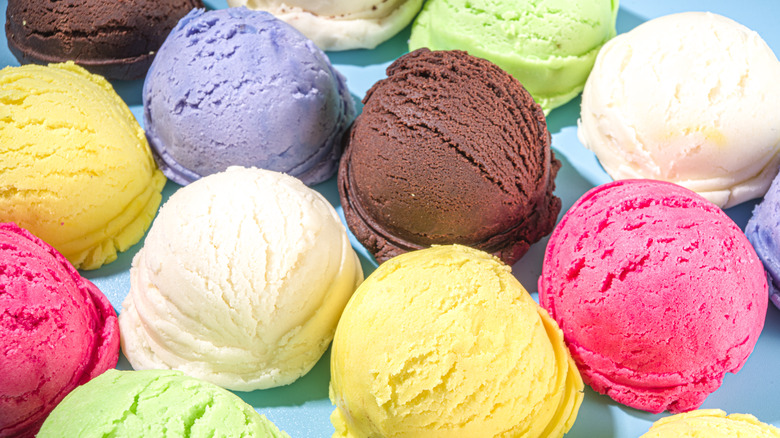The History Of Fidel Castro's Massive Ice Cream Parlor
Celia Sánchez was one of Fidel Castro's earliest and most ardent supporters, per BBC. She was a key contributor in the fight to overthrow Cuban president Fulgencio Batista during the 1950s and when her efforts put her in danger, she joined Castro's band of guerrillas in the Sierra Maestra mountains and fought alongside them. After the revolution was victorious in 1959, she continued to work closely with Castro and was tasked with a number of important projects; notably, the construction of one of the world's largest ice cream parlors, per Atlas Obscura.
Castro loved ice cream, and milkshakes, too. In fact, his love for dairy nearly cost him his life — long before he finally passed away at age 90 in 2016, per Reuters. The CIA tried to assassinate Castro more than 160 times, according to a former Cuban security chief. But the nearest miss came in 1963, when the American intelligence agency teamed up with the Mafia to try to kill him with a toxic botulism-tainted chocolate milkshake. Yes, this really happened.
Castro's love of ice cream was so great, Atlas Obscura observes, that Colombian novelist Gabriel García Márquez once saw him eat 18 scoops in the course of a single afternoon. So in order to feed his own ice cream habit, as well as that of many other ice cream-loving Cubans, Castro decided to build a massive ice cream parlor.
How Coppelia revolutionized Cuban ice cream
Have you ever heard of an ice cream parlor that can handle 1,000 customers at the same time? Well, Fidel Castro's Coppelia can, and Granma once described it as a "cathedral of Cuban ice cream." Celia Sánchez collaborated with architect Mario Girona Fernández on the design of the block-long, banyan tree bounded Coppelia, which opened in 1966 in the Vedado neighborhood in central Havana.
The inspiration for the Coppelia moniker came from a ballet Sánchez loved, explains Atlas Obscura, and the ice cream parlor's iconic logo has long featured a dancing ballerina. The real dancing, however, is done by workers. In 2012, KCET noted that the heladería employed 400 staff, who attended to the estimated 35,000 daily customers. When it first opened, Coppelia showcased 26 flavors, including tropical favorites like guava and orange-pineapple, the Havana Times recalls. That number would later reach 50 in the early 1980s before it began to decline.
In 1990, the fall of East Germany and the Soviet Union brought an end to the Cold War, but it was a blow to traditional trade partner Cuba — and to Coppelia, per The Guardian. Although lines remain long for the popular ice cream parlor, which still serves over 4,000 gallons daily, there are rarely more than a few flavors available, and the quality has fallen off a bit. But just as Castro once survived a poisoned milkshake, Coppelia has survived and is still open today.

